Other Tree Species
along the Tree Walk
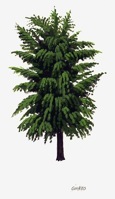
Ginkgo
(Ginkgo biloba)
This living fossil is best identified by its unique fan-shaped leaves. When young, it is spindly but can grow to great heights (60 metres or nearly 200 ft.). There is only one species now, but other species in this family have been identified from geological records dating back 270 million years. Native to China, the trees have spread worldwide. Each tree is either male or female with the fruit found only on the female tree.
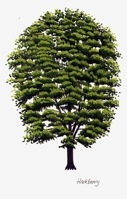
Common Hackberry
(Celtis occidentalis)
Also called False Elm. The Hackberries, being related to Elms, were classified in that family, but are now included in the Hemp family, Cannabaceae. They are native to Ontario on Point Pelee and along Lake Erie and have naturalized elsewhere. The simple leaves are long, pointed, and lopsided. The distinctive bark has narrow ridges with wart-like growths that resemble molten metal.


River Birch
(Betula nigra)
This species is a native of the southern United States and typically grows to 25 metres or over 80 ft. tall. The tree tends to have multiple trunks. The simple, double-toothed, small, leaves are triangular and short-stalked and have a silvery underleaf unique among birches. The bark is a combination of shades of orange, white and red, which peels in ragged sheets. The tree has separate male (catkin) and female (cone) fruit. The sap is sweet and was used in earlier times to make a popular soft drink called birch beer.

Eastern Redbud
(Cercis canadensis)
These small trees, members of the Cassia family, are native to Canada only in its southern-most point at Pelee Island. They have been naturalized as an ornamental further north. The heart-shaped leaves have veins radiating from the leaf base. The spectacular pink-mauve, pea-like, flowers grow in clusters and bloom directly along the branches in early spring before the leaves come out. The fruit pods, resembling pea pods, stay on the branches through the winter.

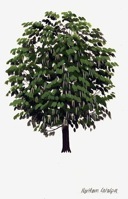
Northern Catalpa
(Catalpa speciosa)
Native to the Mississippi Valley, these large-leafed, medium-sized, trees are often planted because of their showy flowers. Like many Carolinian species, the large leaves appear late in the spring. Flower clusters with petals fused into large tubes appear after the leaves have emerged. The large bean-like fruit remains on the tree in winter, hanging like large brown icicles.
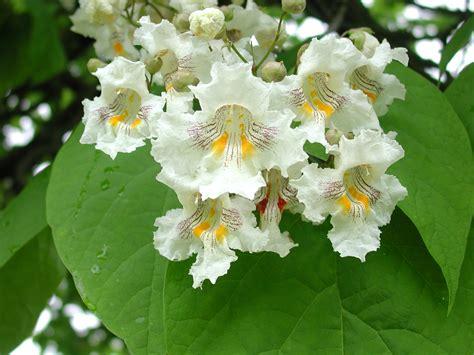

Moraine Sweetgum
(Liquidambar styraciflua ‘Moraine’)
These trees are widespread in the south-eastern United States and are easily recognized by their star-shaped leaves, winged branches, and straight central trunk. The dangling seed balls remain on the tree in winter. Its resinous fragrant gum was used medicinally and for chewing gum.


Tuliptree
(Liriodendron tulipifera)
The straight trunk of this tree, also known as yellow poplar, can measure up to 35 m. or 100 ft. tall. It is a Carolinian species. Its distinctively lobed leaves come out late in the spring, followed by large, tulip-shaped, yellow flowers that bloom in late May. The fall foliage is golden. It is native to Canada in the Niagara region, where the Tree Walk is found, and along the shores of Lake Erie. This is an ancient tree, with flowers that are pollinated by beetles, which may indicate that the species developed before bees appeared.
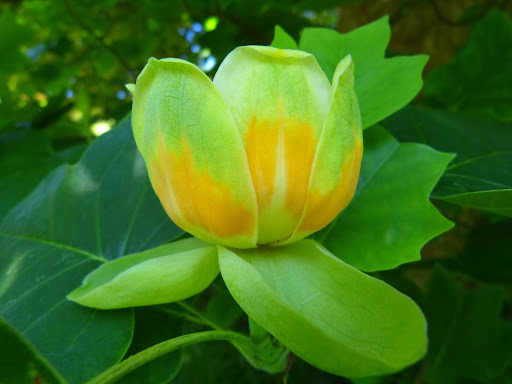

Shagbark Hickory
(Carya ovata)
In Canada, this member of the Walnut family is found in southern Ontario and along the shores of the St. Lawrence river. The leaves are compound, with five-to-seven leaflets, widest at the middle and pointed at both ends. The fine teeth found at the margins have tufts of hairs. The bark that gives the tree its name is smooth when young but matures into long, shaggy, plates, curled at both ends. The round fruit has a thick husk and the nuts inside are the main source of edible hickory nuts. They are an important food source for humans and animals.
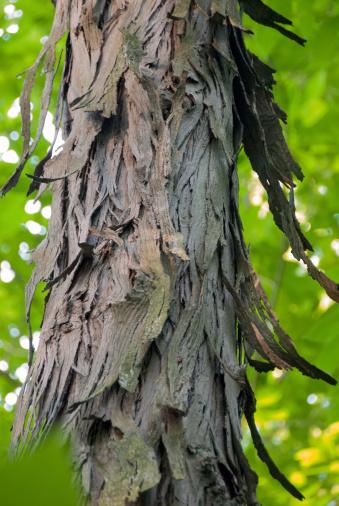
Other species you may see on the Tree Walk but not on the map…
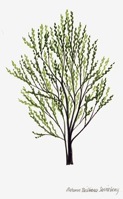
Autumn Brilliance Serviceberry
(native)

Colorado Blue Spruce

Flowering Dogwood
(native)

Serbian Spruce

